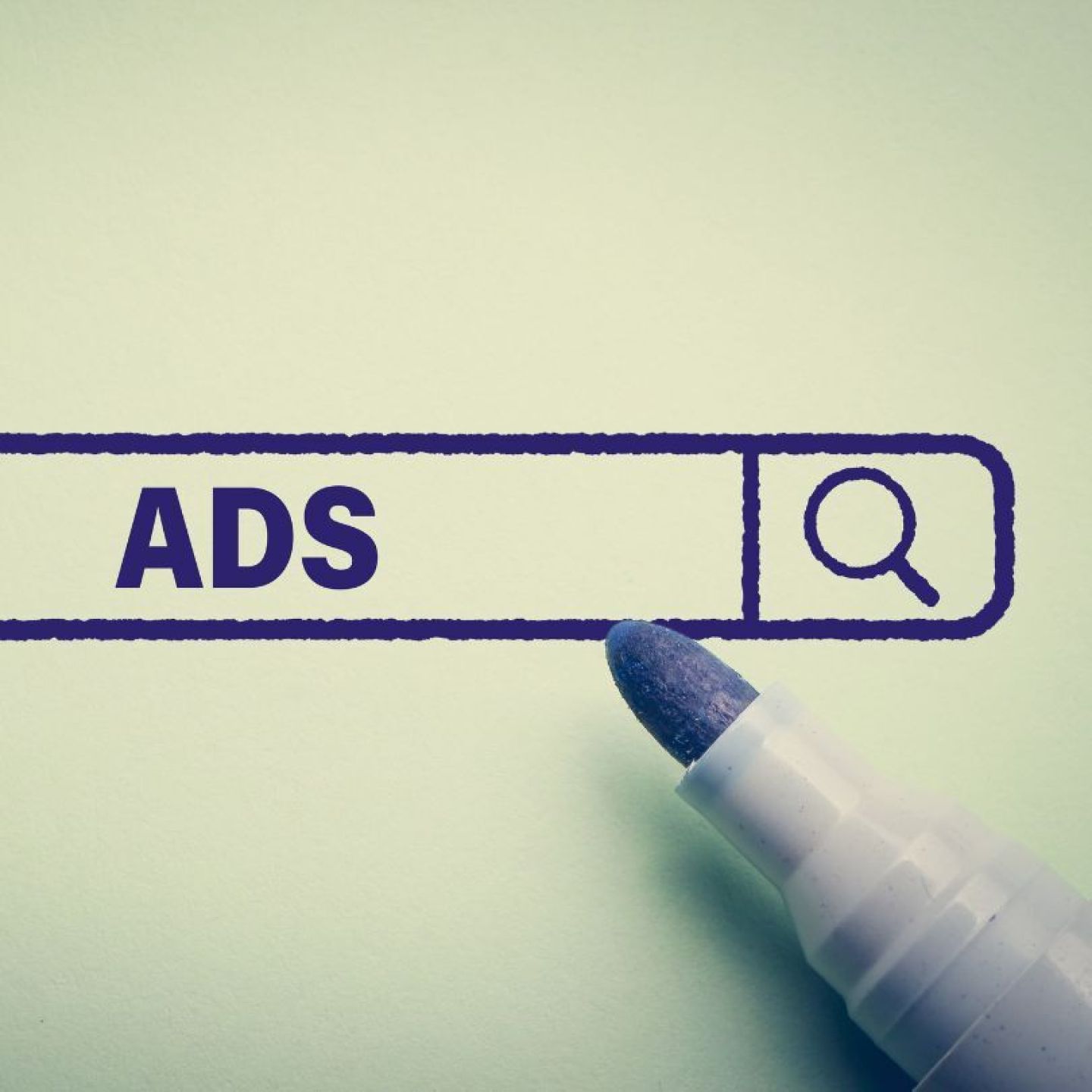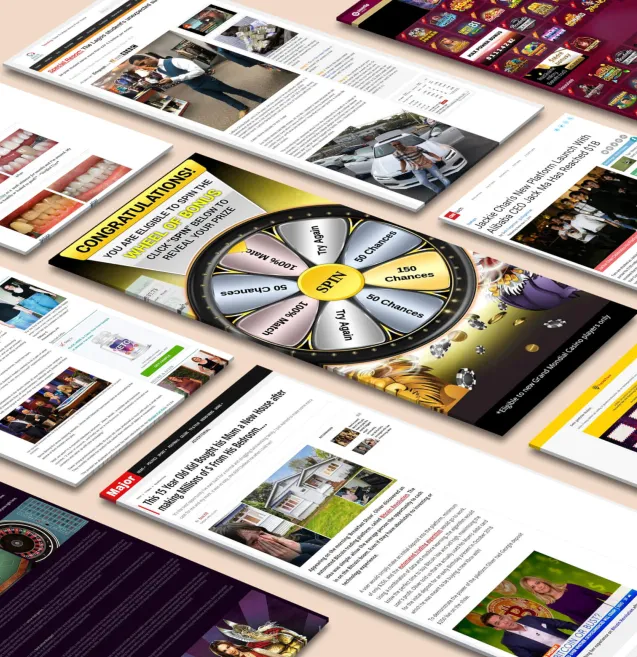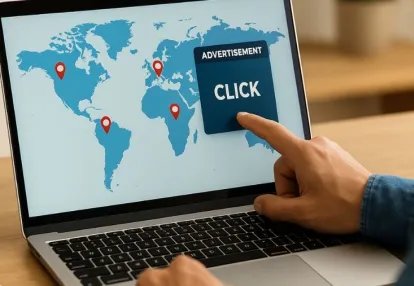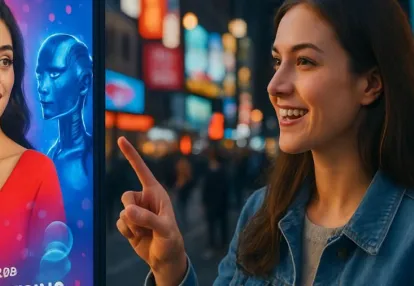
Our spy tools monitor millions of popup and pop-under from over 90+ countries and thousands of publishers.
Get StartedThe world of digital advertising has changed dramatically in 2025, with new technologies and strategies reshaping how brands connect with their audience. As social commerce is expected to reach $8.5 trillion by 2030, advertisers are scrambling to adapt their approaches to meet the changing needs of consumers.
You might be curious about the role of pop ads in this evolving landscape. Surprisingly, these often-criticized advertising tools are making a comeback, thanks to AI-driven personalization and immersive technologies. However, it's crucial to ensure that these pop ads meet compliance standards, an important aspect that is often overlooked in marketing strategies.
The way consumers interact with brands has undergone a significant transformation:
Pop ads are adapting to these changes in consumer behavior. With improved targeting capabilities and innovative creative approaches, they're evolving from being mere interruptions to becoming personalized touchpoints throughout the customer journey. For example, some brands are using techniques similar to those employed in Google popup ads to enhance user experience.
The question isn't whether pop ads will survive in 2025 - it's how they'll transform digital advertising through intelligent technology and user-focused design.
Modern pop advertising has evolved far beyond the intrusive windows that once plagued internet users. Today's pop ads leverage sophisticated targeting algorithms and user behavior data to create personalized, contextually relevant experiences.
Non-intrusive pop-ups present unique advantages for advertisers and marketers:
The challenges of implementing non-intrusive pop-ups include:
A/B testing stands as a crucial element in modern pop advertising success. Your testing strategy should focus on:
Data from A/B testing helps you refine pop ad campaigns by identifying the most effective combinations of timing, design, and content elements that resonate with your target audience.
Creating pop ads that users want to engage with requires a delicate balance of design elements and user psychology. Here's what makes pop ads effective in 2025:
Take Spotify's premium subscription pop-up as an example. It appears when users hit their free listening limit, featuring a dark theme with neon accents, minimal text, and a clear value proposition. The timing aligns perfectly with user need, making it feel helpful rather than intrusive.
Another success story is Airbnb's location-based pop-ups. These ads use local imagery, personalized pricing, and appear when users show booking intent. The design incorporates subtle animations and location-specific photography that captures attention without disrupting the browsing experience.
Your pop ad design should prioritize user experience while maintaining brand consistency. Testing different design variations helps identify what resonates with your specific audience.
To achieve such successful outcomes, it's essential to understand the intricacies of pop advertising. By leveraging the secrets of successful advertisers, you can create massively scalable pop ads that not only capture attention but also drive engagement.
Pop ads in 2025 have evolved into powerful conversion tools when strategically implemented. Here's how you can transform your pop ads from potential nuisances into conversion powerhouses:
Your pop ads should feel like a natural extension of the user experience, not an interruption. By combining these elements with AI-driven insights, you can create conversion-focused pop ads that resonate with your target audience and drive meaningful results.
The world of advertising is going through a major change. Thanks to AI technology, pop-up ads are evolving from simple interruptions into powerful marketing tools. With the help of machine learning algorithms, these ads can now analyze how users behave, what they like, and how they interact with content in real-time. This means that advertisers can deliver highly personalized pop-up experiences tailored to each individual.
But it's not just about personalization. The future of pop-up ads also lies in the integration of immersive visual formats. Technologies like virtual reality (VR) and augmented reality (AR) are being used to create interactive and engaging ad experiences that go beyond traditional static images or videos.
While these advancements offer exciting opportunities for advertisers, they also come with their own set of challenges:
The key to success lies in finding the right balance between technological innovation and user experience. Companies that have already implemented these advanced features report significantly higher engagement rates compared to traditional pop-up ads.
Smart advertisers are taking note of this trend and are actively experimenting with hybrid approaches. By combining AI-driven targeting techniques with immersive elements such as VR or AR, brands can create memorable experiences that resonate with modern consumers.
In 2025, pop ads are at a crucial turning point. They are no longer seen as annoying interruptions but rather as valuable marketing tools. This change marks a new era in digital advertising.
With the help of AI, immersive technologies, and data-driven targeting, pop ads have been transformed into powerful tools for driving sales.
The success of pop ads now depends on advertisers' ability to:
The question isn't whether pop ads will survive - it's how they'll evolve to meet changing consumer expectations. Smart advertisers who adapt to these shifts will unlock significant opportunities, turning what many consider an annoying nuisance into an untapped goldmine for engagement and conversions.
Receive top converting landing pages in your inbox every week from us.
Tips & Tricks
Expanding your pop ad campaigns globally requires the right geo-targeting strategies. Explore five proven approaches to scaling pop ads across different regions while maintaining strong performance. Learn how to adapt creatives, timing, and messaging to match local audiences and cultural nuances. Perfect for advertisers ready to take their pop campaigns to an international level with confidence.
David Kim
7 minDec 11, 2025
How-To
Turn lost opportunities into sales with effective holiday remarketing using push ads. Learn how to re-engage shoppers who abandoned their carts through timely, personalized notifications. Discover proven strategies for crafting irresistible messages that drive action and recover revenue. Perfect for marketers aiming to boost conversions and maximize holiday season profits.
Elena Morales
7 minDec 10, 2025
How-To
AI is transforming the way advertisers approach pop campaigns in 2025. Discover how automation, predictive analytics, and real-time optimization can enhance targeting and boost engagement. Learn practical tips for creating smarter, high-performing pop ads that deliver measurable results. Perfect for marketers ready to stay ahead in the evolving world of AI-driven advertising.
Priya Kapoor
7 minDec 8, 2025




